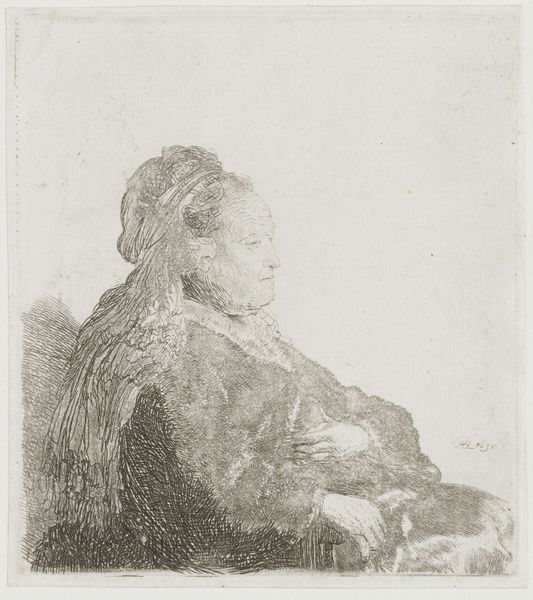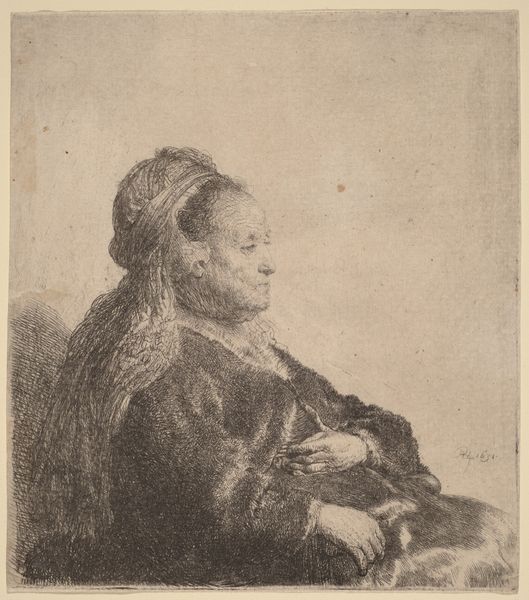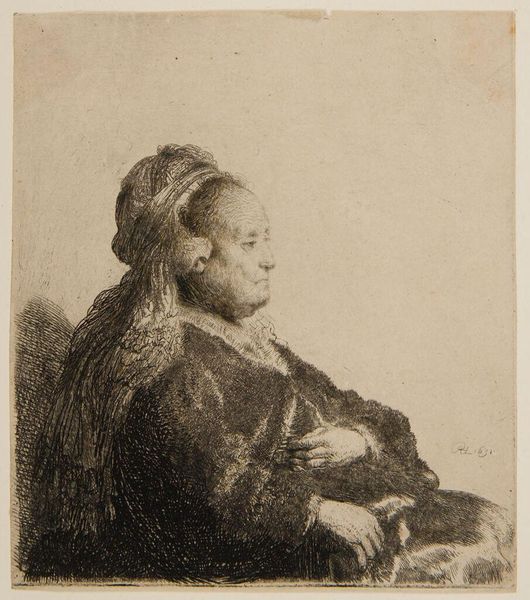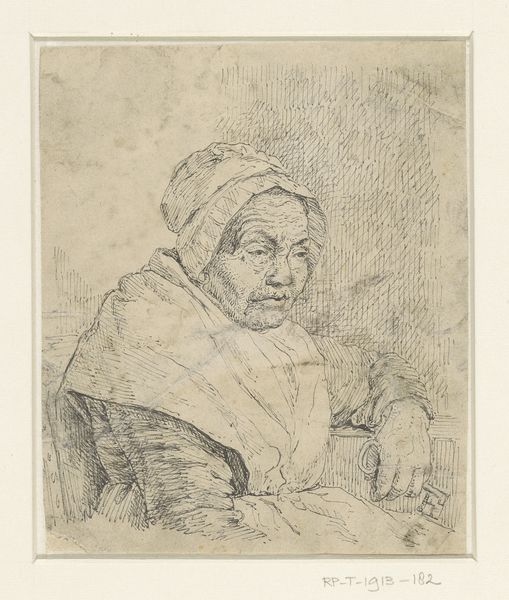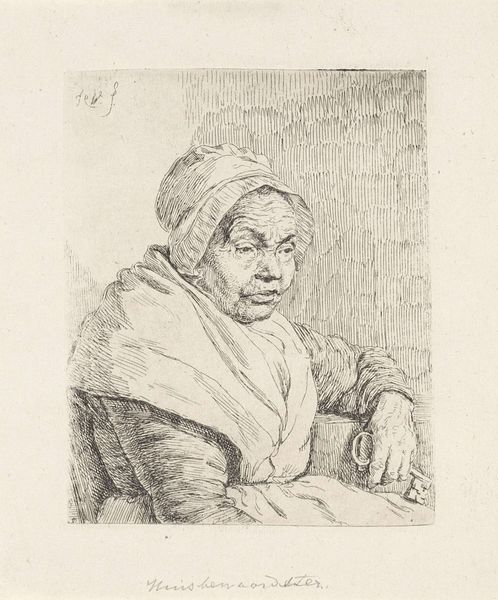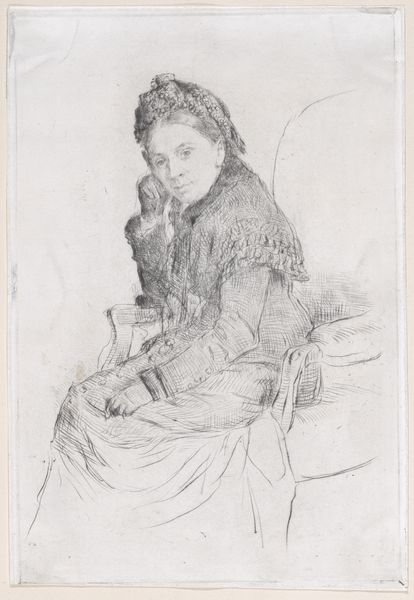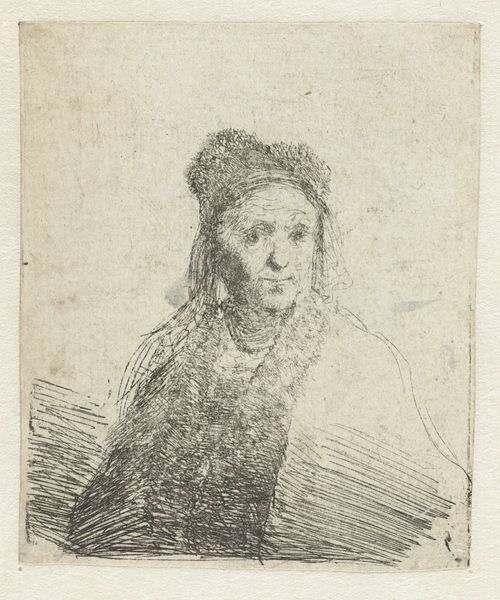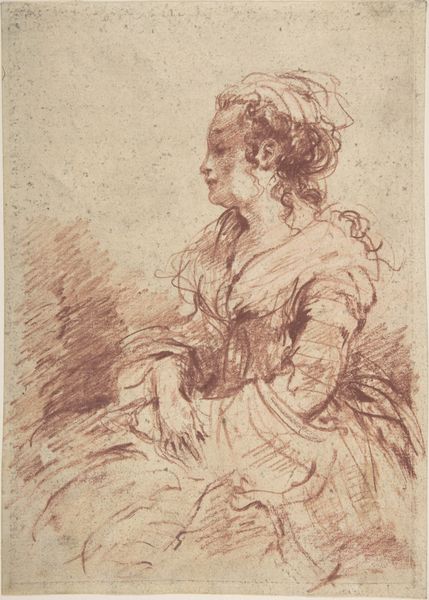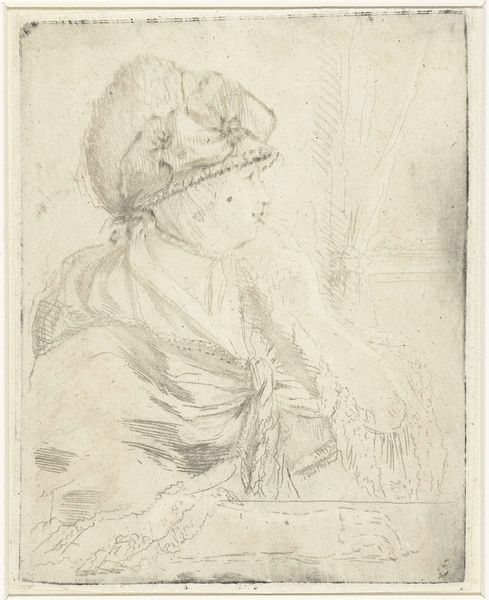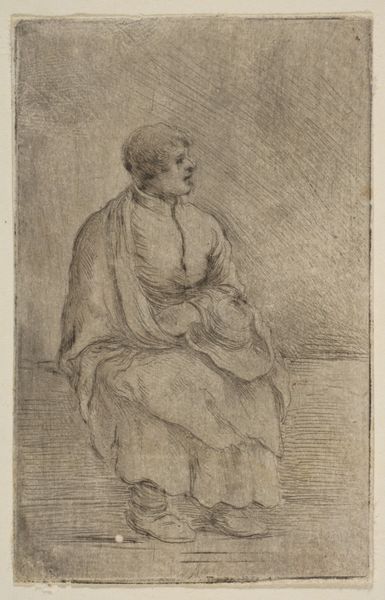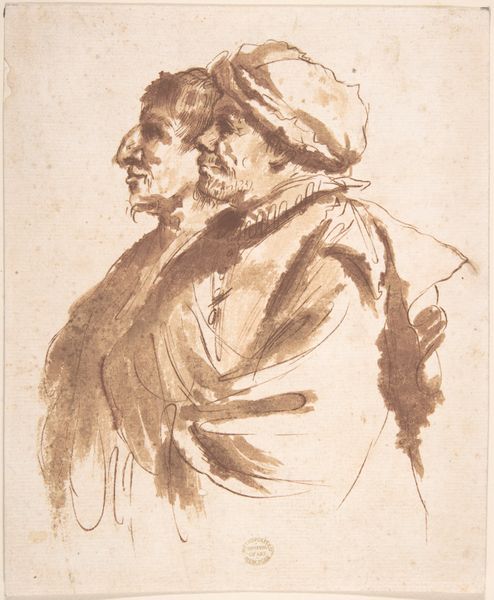
Rembrandt's mother seated facing right, in an oriental headdress: half-lenght, showing hands 1631
0:00
0:00
print, engraving
#
portrait
#
baroque
#
dutch-golden-age
# print
#
figuration
#
line
#
engraving
Dimensions: 145 mm (height) x 129 mm (width) (plademaal)
Curator: Let's turn our attention to "Rembrandt's mother seated facing right, in an oriental headdress: half-lenght, showing hands," an engraving made by Rembrandt van Rijn in 1631. The piece resides here at the SMK, Statens Museum for Kunst. Editor: There's an undeniable warmth despite the monochrome. Her expression seems so knowing, almost… prophetic. Curator: It's fascinating to consider Rembrandt's process here. This is an engraving, meaning the image is incised into a plate, likely copper. Imagine the labor involved in achieving this level of detail, each line meticulously etched, each varying in depth to create shadow and form. The circulation of prints in 17th-century Holland was immense. It’s a democratizing form of art production. Editor: And what does this particular representation, his mother in exotic garb, communicate? The "oriental headdress," as the title calls it, isn’t strictly accurate, but evokes a certain mystique, linking her to a world beyond Dutch society. Her clothing hints at both prosperity and a deep connection with cultural narratives, a way of performing identity. Perhaps Rembrandt is making a subtle commentary on the performative nature of identity, even within a domestic portrait. Curator: The materiality also informs that read, right? Think of the clothing. He captures the texture of fur and fabric so skillfully. These materials weren’t just aesthetic choices; they signaled wealth, status, and connection to global trade networks. And, crucially, his decision to depict his mother – regardless of adornment – speaks to the shifting social function of portraiture, away from only the aristocracy. Editor: Precisely! Her hands, clasped so subtly, convey a sense of quiet authority. They aren't performing any action; they simply *are*. They symbolize not only her age and wisdom but the power of maternal influence, something universally understood but imbued here with the specific cultural cache of the Dutch Golden Age. The light falling on her face, it's all so symbolically charged. Curator: A fruitful print for examination! Reflecting both a reverence for skill and also broader social and economic changes, it leaves us pondering the meaning behind representations. Editor: Indeed. It is clear that this single image has stirred consideration of so many different aspects and representations from Rembrandt, of Dutch heritage and maternal influences.
Comments
No comments
Be the first to comment and join the conversation on the ultimate creative platform.
